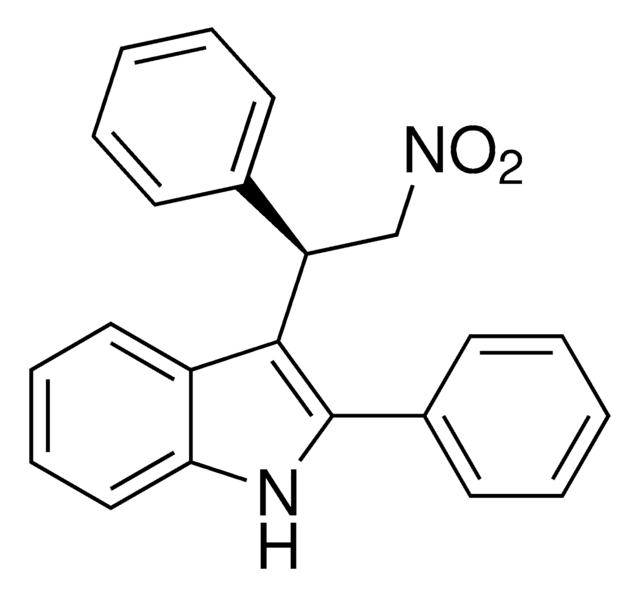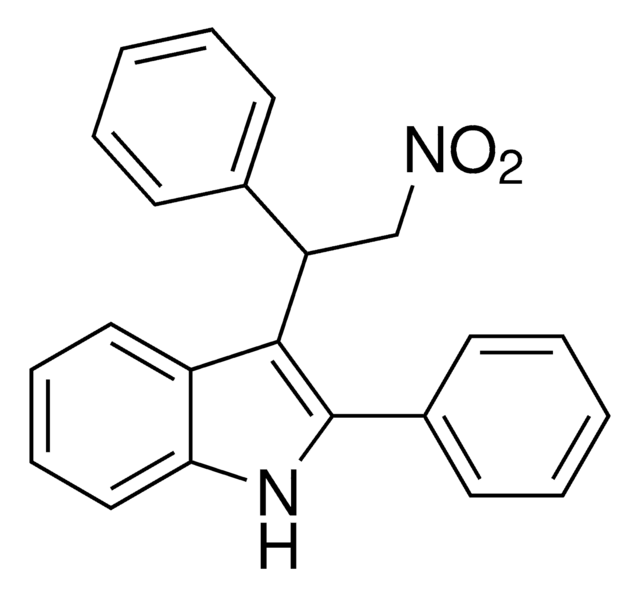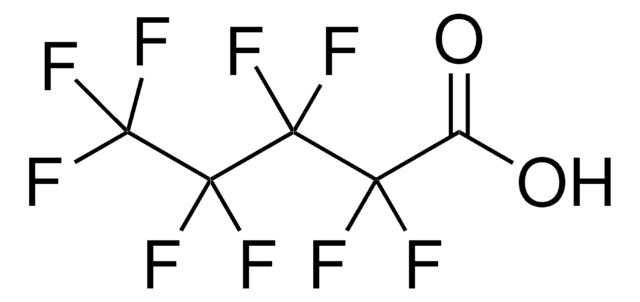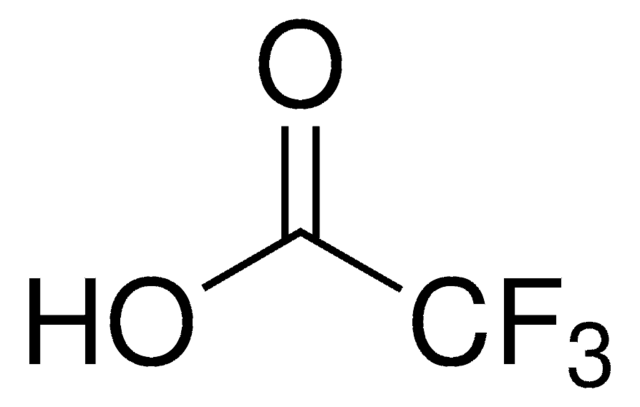SML1951
GAT229
≥98% (HPLC)
Synonym(e):
S-(-)-3-(2-Nitro-1-phenylethyl)-2-phenyl-1H-indole
Anmeldenzur Ansicht organisationsspezifischer und vertraglich vereinbarter Preise
Alle Fotos(1)
About This Item
Empirische Formel (Hill-System):
C22H18N2O2
CAS-Nummer:
Molekulargewicht:
342.39
UNSPSC-Code:
12352200
NACRES:
NA.77
Empfohlene Produkte
Assay
≥98% (HPLC)
Form
powder
Optische Aktivität
[α]/D -80 to -94°, c = 1 in methanol
Farbe
white to beige
Löslichkeit
DMSO: 20 mg/mL, clear
Lagertemp.
2-8°C
Biochem./physiol. Wirkung
GAT229 is the S-(-)-enantiomer of GAT211, a positive allosteric modulator (PAM) of cannabinoid CB1 receptor signaling that was found to amplify the therapeutic effect of endocannabinoids without the negative side effects of psychoactivity or tolerance. GAT229 was found to be a potent, Gαi/o-biased CB1 PAM without intrinsic activity, while the R-(+)-enantiomer, GAT228, was found to be an unbiased CB1 allosteric agonist. In radioligand binding assays, both GAT228 and GAT229 behaved as PAMs of orthosteric ligand binding, with GAT229 exhibiting higher potency and efficacy. Allosteric CB1R activation by GAT211 and its enantiomers could be a better therapeutic strategy for enhancing endogenous cannabinergic activity than targeting endocannabinoid-degrading enzymes with small-molecule inhibitors, with a lower likelihood of tolerance and dependence.
Lagerklassenschlüssel
11 - Combustible Solids
WGK
WGK 3
Flammpunkt (°F)
Not applicable
Flammpunkt (°C)
Not applicable
Analysenzertifikate (COA)
Suchen Sie nach Analysenzertifikate (COA), indem Sie die Lot-/Chargennummer des Produkts eingeben. Lot- und Chargennummern sind auf dem Produktetikett hinter den Wörtern ‘Lot’ oder ‘Batch’ (Lot oder Charge) zu finden.
Besitzen Sie dieses Produkt bereits?
In der Dokumentenbibliothek finden Sie die Dokumentation zu den Produkten, die Sie kürzlich erworben haben.
Robert B Laprairie et al.
ACS chemical neuroscience, 8(6), 1188-1203 (2017-01-20)
The cannabinoid 1 receptor (CB1R) is one of the most widely expressed metabotropic G protein-coupled receptors in brain, and its participation in various (patho)physiological processes has made CB1R activation a viable therapeutic modality. Adverse psychotropic effects limit the clinical utility
Unser Team von Wissenschaftlern verfügt über Erfahrung in allen Forschungsbereichen einschließlich Life Science, Materialwissenschaften, chemischer Synthese, Chromatographie, Analytik und vielen mehr..
Setzen Sie sich mit dem technischen Dienst in Verbindung.








